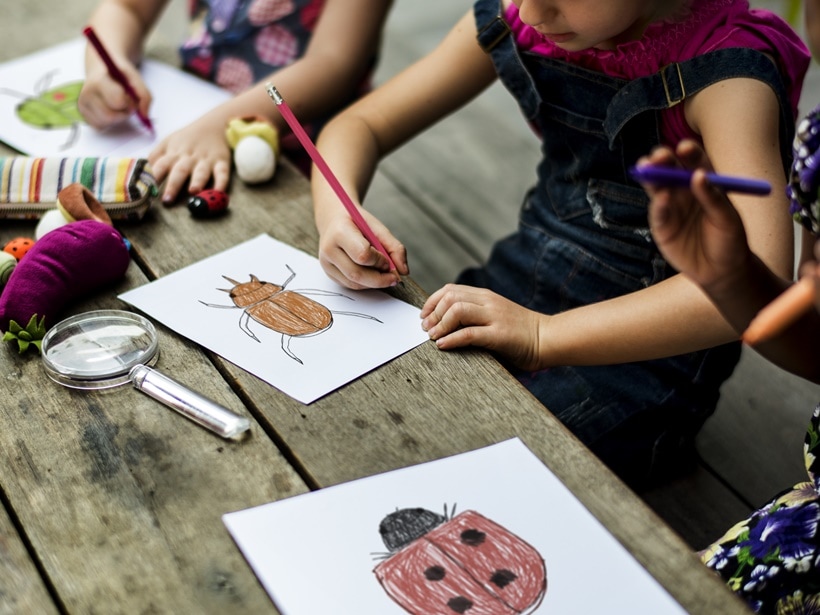Recently, actor Salman Khan, known to be an artist himself, was seen teaching his nephew how to paint on canvas. Here are some reasons why art and colouring are beneficial for little children, helping them develop key skills.
By Amita Bhardwaj
If you have viewed art and colouring as one of the many activities in your repertoire that can hold a child’s attention for a bit, it is time to relook at the many benefits that come with this seemingly innocuous pursuit. From getting the child to use crayons on paper, to getting him or her to paint ice-cream sticks to even painting straws, twigs and more, this activity can take many different forms and comes with as many benefits. Here are only a few:
Developing Motor Skills
There isn’t an easier way of helping the child develop fine motor skills than to get them interested in colouring. With them learning to colour within specified boundaries, what you are helping develop is hand-eye coordination. This is a skill that you will in fact progressively see increasing for yourself, as the same child that found it difficult to keep to boundaries, starts to do it effortlessly. Going forward, it will also help the child in their writing work as they would have learnt to hold the pencil or the crayon, correctly.
Concentration
What also follows from the activity is improved concentration as the child learns to focus on the task. Again, this is something you will view for yourself as the time interval for which the child engages in the activity gradually increases. That this newfound ability of being able to concentrate will reap benefits as the child starts his academic journey, is a given!
Colour Recognition
Odds are that you have been painstakingly trying to teach colour recognition to the child. Fact is, with this activity, it no longer remains a task and provides you with many coachable moments where you can demonstrate the colour of the sky or the sun with ease. The more the quality time you spend with the child while they are colouring, the better their colour recognition skills tend to become.
Self-expression
While, on the one hand, colouring teaches the child to stick to boundaries, when done right, what it also does is to allow the child to step out of them. There can be no better way of self-expression but to allow the child’s imagination to take flight with myriad colours. You will be pleasantly surprised with the outcome. In fact, colouring stimulates the child’s creativity like little else. You will soon see them experiment with shades, patterns and more.
Planning skills
What art also helps the child imbibe, are planning skills. Allow the child to take up the colouring project on their own and you will hear from them how they intend to colour “x” object first or how “a certain colour will look better than the other”. A skill, that learnt early, will stand them in good stead through out life!
Language Development
What they are developing as they plan their colouring sheets or twigs and straws aren’t just critical thinking skills but also their language skills. There is no way you can miss the fact that they describe their work of art to you in great detail and use new words and phrases in the process. What you could definitely do is to use this as a coachable moment and add to their vocabulary without them as much as noticing it.


Stress Relief
The stress relieving effects of art, work as much for children as they do for adults. There isn’t a better way to help them calm down especially when they are over excited or stressed. In fact, you could always encourage this as an activity in times when they are upset or angry as colouring can turn out to be extremely therapeutic as it helps them relax.
Self-esteem and Confidence
Again, when done right, this can be an activity that goes a long way in developing both their self-esteem and confidence. Pointing out what all the child has done right (and his areas of improvement) in a positive manner can not only enhance the child’s confidence but can also lay the foundation for the child to be able to accept positive feedback.
Quality Time
Art can be that perfect activity over which you can bond with the child as well as teach them important life lessons without making them sound so. In fact, consider picking up a colouring activity yourself as the child is involved in his or her artwork. The conversation that flows while both of you are at work is likely to transcend topics. Before you know it, it will be that “us time” that both of you will begin to look forward to.
(The writer is Director-Curriculum with Footprints Childcare, a national Play School & Day Care chain.)
Source: Read Full Article





